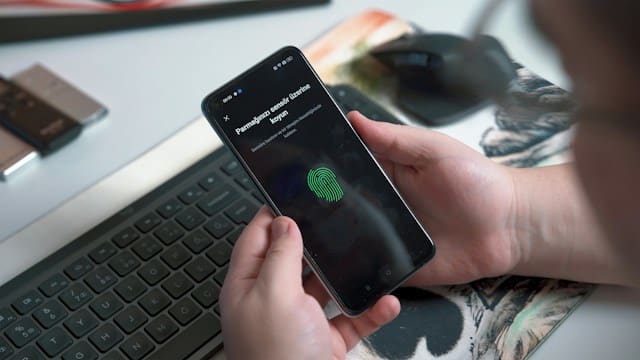It wouldn’t be an overstatement to say that biometric technology has revolutionized the way we handle security. Previously, we used to rely heavily on passwords, personal identification numbers (PINs), and physical keys. However, with the advent of biometrics, we are moving towards a more digitized and secure world.
First things first, let’s define biometrics. It refers to the technical systems that use information about a person (or other biological organism) to identify that person. Biometric systems rely on specific data about unique biological traits in order to work effectively. For instance, fingerprint recognition, facial recognition, and voice recognition are common methods of biometric authentication.
A découvrir également : Interior design trends dominating the Philadelphia scene in 2024
Now, let’s delve into the meat of the matter and see how this technology is transforming personal security systems.
Biometric Authentication: A Secure Way of Identification
One of the primary ways biometrics is changing personal security is through authentication. Unlike normal passwords and PINs, biometric authentication is unique to each individual, making it significantly harder to replicate or steal. Whether it’s your fingerprint, your face, or your voice, these unique characteristics serve as your digital identity.
A lire également : Presentation of reinforced strapping techniques for heavy loads
Your fingerprint, for instance, is unique only to you, and it won’t change over time. This makes fingerprint recognition one of the most commonly used biometric authentication methods. You probably use it every day to unlock your phone or to authorize mobile app transactions.
Equally secure is facial recognition. Your face has unique features that can be detected and measured, creating a digital map that is almost impossible to fake or replicate. Many of you might be using this feature to access your devices or applications.
Biometric Technology in Banking
Banking is one industry where biometric technology has proved to be a game-changer. Gone are the days where you had to remember complex passwords or carry around a physical token for banking operations.
Biometrics has made it easier and more secure to access banking services. Banks now use fingerprint identification and facial recognition to authenticate users, replacing the traditional methods of authentication. It’s not just about convenience, it’s about security.
For example, imagine you lose your debit card. In the past, anyone who found it could potentially use it, provided they could figure out your pin. Now, thanks to biometric authentication, even if someone finds your card, they won’t be able to use it because they can’t replicate your fingerprint or face.
The Future of Biometric Technology
If you’ve been paying attention, you’ll realize that biometric technology is not just a passing trend. In fact, it’s set to become the backbone of personal security systems in the future.
According to many experts, the future of biometrics lies in multi-modal verification. That means using more than one method of biometric verification to ensure maximum security. For instance, a system might require both fingerprint and facial recognition to grant access. This makes it even harder for anyone to gain unauthorized access.
In Control of Your Personal Data
In an increasingly digital world, safeguarding your personal data is of utmost importance. With biometrics, you are in control of your own data. There’s no need to remember complex passwords or carry physical keys around. Your unique biological traits serve as your key, and they’re always with you.
That being said, it’s also crucial to ensure that your biometric data is stored securely. After all, while a password can be changed if it’s compromised, your biometric data can’t. It’s therefore essential that companies that collect biometric data take every possible measure to protect it.
In the end, biometric technology is proving to be an invaluable tool in transforming personal security systems. It offers a unique combination of convenience and security, making our lives easier while also protecting us. So next time you unlock your phone with your fingerprint, take a moment to appreciate the sophisticated technology at your fingertips.
Biometric Technology in Law Enforcement
Law enforcement agencies around the world have been early adopters of biometric technology for years, primarily using it for identity verification. In the past, the FBI developed the FAP (Fingerprint Applicant Services of Texas) system, which was the largest biometric database in the world, holding fingerprints, palm prints, and facial recognition data.
Nowadays, the application of biometric technology in law enforcement has expanded beyond just fingerprint and face recognition. Iris scans, palm vein patterns, and behavioral biometrics like gait and voice recognition are also being employed.
For instance, analyzing a person’s gait or walking pattern can be an effective way of identifying a suspect from a distance, without having to rely on facial recognition alone. Voice recognition, on the other hand, can be used in wiretapping operations or security checks for real-time identity verification.
Moreover, the use of biometric technology in law enforcement not only increases the speed of identifying criminals but also enhances the accuracy of their work, thereby improving public safety.
However, like every technological advancement, the use of biometrics in law enforcement raises privacy concerns. There is a need for robust regulations and ethical guidelines to ensure that this technology is used responsibly and doesn’t infringe on people’s rights.
User Experience in Biometric Systems
Biometric technologies, apart from enhancing security, also significantly improve the user experience. Traditional security systems require users to remember numerous complex passwords. However, with biometric identification, users can authenticate their identity with just a glance or touch, improving the speed and ease of access.
Biometric systems also reduce the risk of unauthorized access due to lost or forgotten passwords. This not only enhances the user experience but also improves the overall security posture of an organization.
Real-time biometric identification also plays a significant role in providing a seamless user experience. For instance, in automated border control systems, biometric technology allows for quick and hassle-free passenger processing, enhancing the overall travel experience.
In essence, biometric technology provides a hassle-free and intuitive user experience, making it a preferred choice for many industries.
Conclusion: The Transformative Power of Biometric Technology
In conclusion, biometric technology is significantly transforming personal security systems. The unique biological and behavioral characteristics used in biometric authentication offer a secure and user-friendly way of identity verification and access control. This technology, which includes facial recognition, fingerprint identification, voice recognition, and other biometric data, is becoming integral to various sectors, including banking, law enforcement, and many more.
However, as biometric technology continues to advance, it’s essential to strike a balance between security and privacy. The secure storage and ethical use of biometric data are of paramount importance to prevent unauthorized access and misuse.
Despite these challenges, the future of biometric technology appears promising and is set to offer more secure and user-centric solutions. With the potential of biometric technology still being explored, we can look forward to even more innovative and robust personal security systems in the future.











